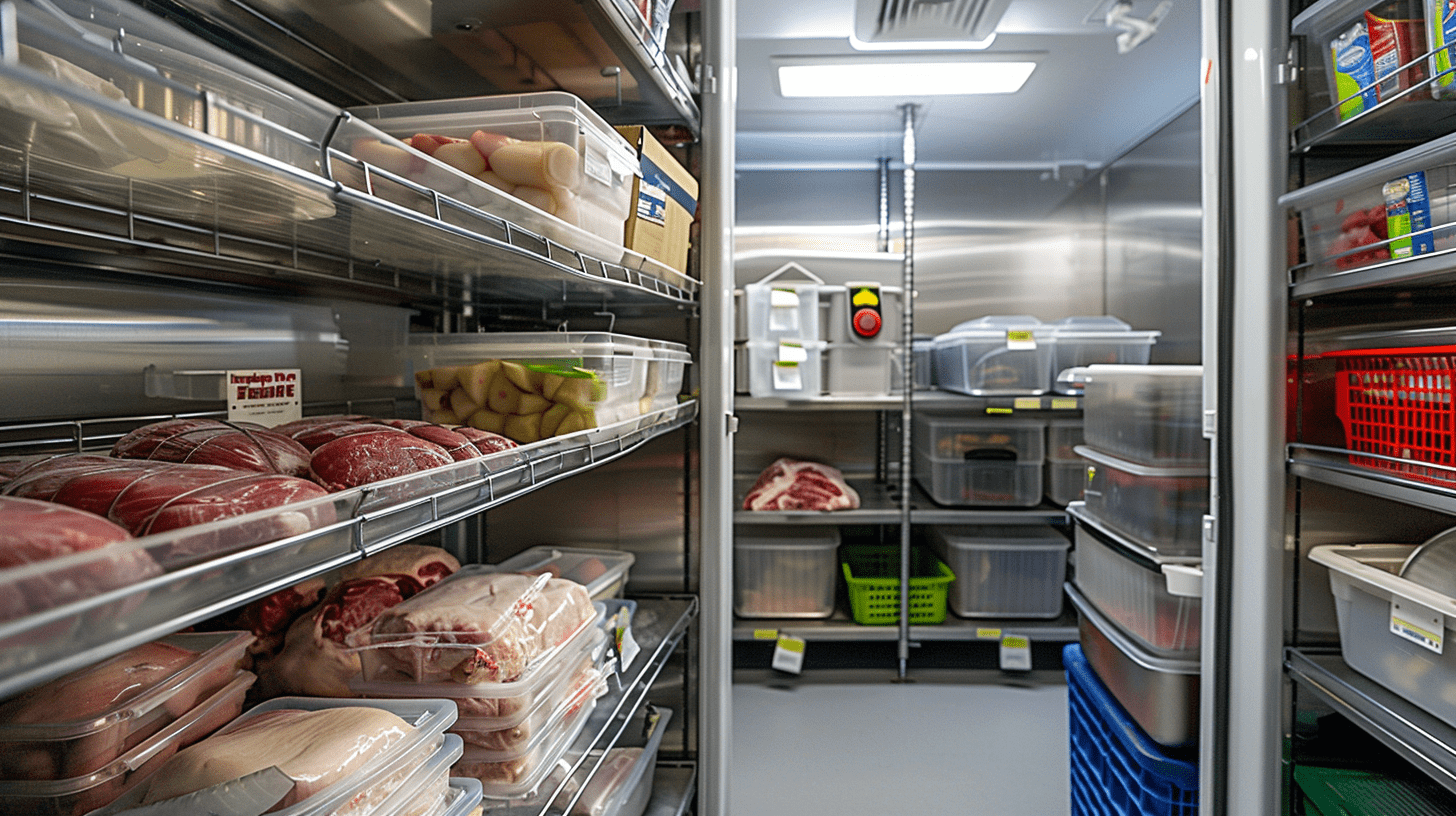Walk-in coolers are essential for foodservice businesses that need to keep perishable items fresh and safe. But did you know that the way you organize your cooler can significantly affect its efficiency and your bottom line? In this article, we’ll provide practical tips for organizing your walk-in cooler to enhance food safety, reduce waste, and increase profits.
Evaluate Your Space
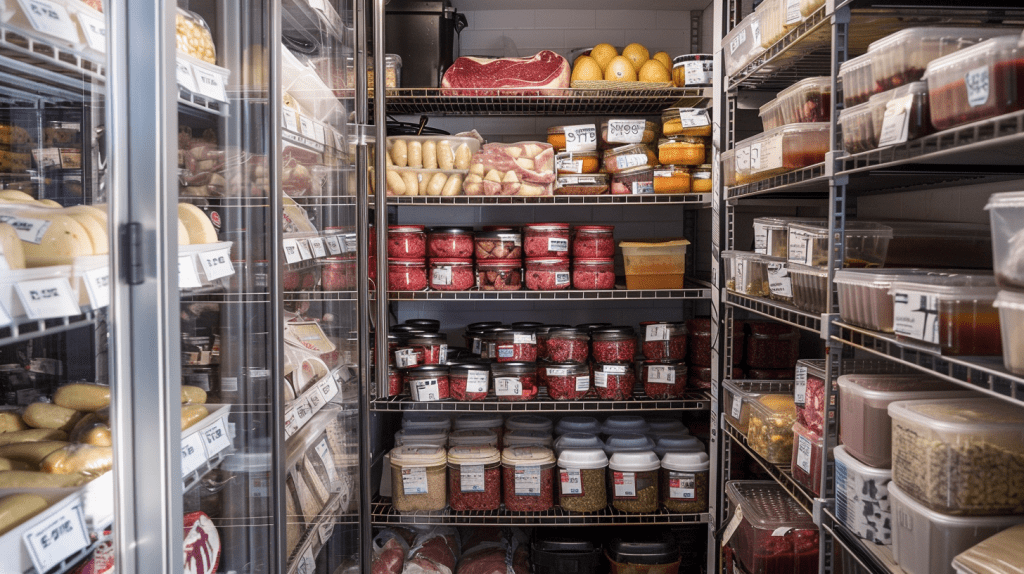

Before you can effectively organize your walk-in cooler, it’s important to understand its layout and capacity. Consider the following aspects:
- Size – Measure the interior dimensions of your cooler to determine available square footage for storage.
- Accessibility – Note the location of doors, shelves, and any other features that could impact how you arrange items inside the cooler.
- Current Usage – Take stock of what’s currently stored in the cooler. Are there any frequently used items that could be better positioned for easy access?
By evaluating these factors, you’ll gain a clearer picture of how to best utilize your walk-in cooler‘s space.
Group Similar Items Together


One of the most effective ways to improve organization in your walk-in cooler is to group similar items together. This not only makes it easier to find what you’re looking for but also helps with inventory management. Consider the following categories for grouping:
- Raw Proteins – Store raw meat, poultry, and seafood together to prevent cross-contamination. Use separate bins or shelves for each type.
- Fruits and Vegetables – Keep produce in designated areas, ensuring they are stored at appropriate humidity levels to maximize freshness.
- Dairy Products – Store milk, cheese, and yogurt together, ideally on shelves that allow for proper air circulation.
- Beverages – If your cooler is large enough, designate a specific section for drinks to avoid constant opening and closing of other storage areas.
- Condiments and Sauces – Group together smaller items like ketchup, mustard, and salad dressings in a container or shelf area for easy access.
Implement FIFO (First In, First Out)
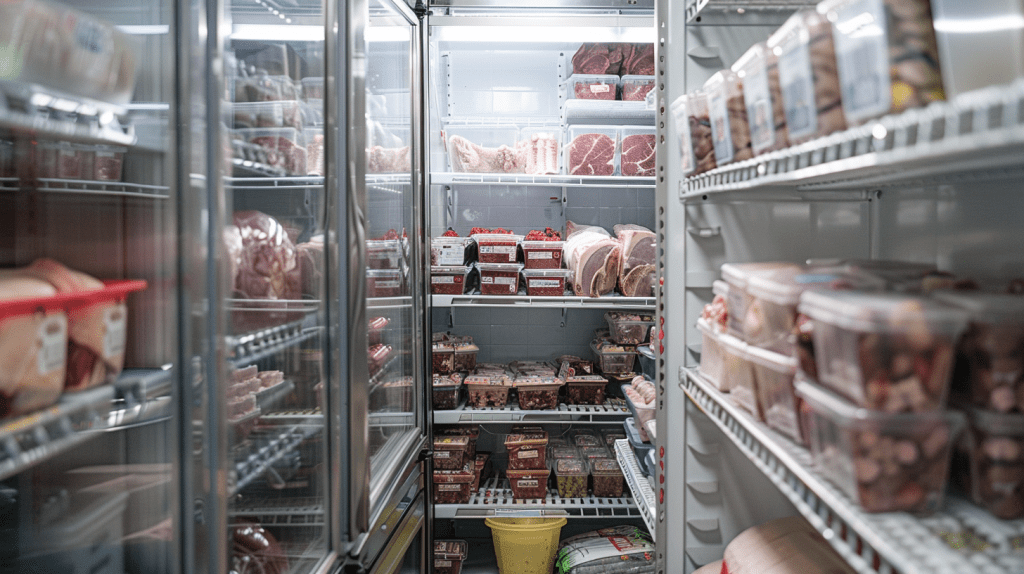

To minimize spoilage and waste, implement a FIFO (First In, First Out) system for your walk-in cooler. This approach ensures that older items are used before newer ones, helping to keep your inventory fresh. Here are some tips for successful FIFO implementation:
- Labeling – Clearly label all items with their purchase or delivery dates. This will make it easy for staff to identify which items need to be used first.
- Storage Arrangement – Position older items towards the front of the cooler and newer items towards the back. This encourages staff to grab the older items first.
- Regular Checks – Conduct routine inspections to ensure the FIFO system is being followed and that no items are being overlooked.
By adopting FIFO practices, you’ll not only reduce food waste but also contribute to better food safety practices in your establishment.
Use Clear Labels and Signage
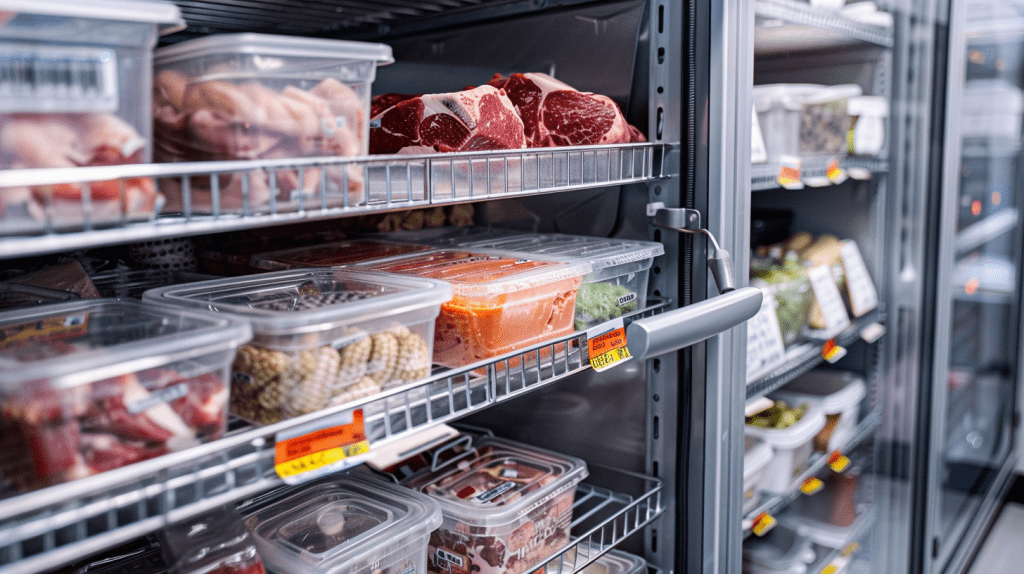

Effective labeling and signage can greatly enhance the organization of your walk-in cooler. By making it easy for staff to locate and identify items, you can reduce the time spent searching for products and minimize the risk of cross-contamination. Here are some suggestions for optimizing labels and signage:
- Clear Labels – Use bold, clear labels on shelves, bins, and containers. Include the name of the item, as well as any relevant information like expiration dates.
- Color Coding – Implement a color-coding system for different food groups or categories. This visual cue helps staff quickly identify where items should be stored and retrieved from.
- Signage for Storage Guidelines – Use signs to communicate essential storage guidelines, such as temperature requirements for specific food items. This reinforces food safety practices among your staff.
- Emergency Contacts – If your cooler has a temperature monitoring system, post emergency contact information for repairs or maintenance in a visible location.
By investing time in proper labeling and signage, you’ll foster a more efficient and organized environment in your walk-in cooler.
Maintain Proper Airflow and Temperature


For optimal food storage, it’s crucial to maintain proper airflow and temperature within your walk-in cooler. Poor airflow can lead to hot spots, compromising the integrity of perishable items. Here’s how to ensure good airflow and temperature control:
- Keep Vents Clear – Ensure that air vents and circulation fans are not obstructed by boxes or other items. This allows for even distribution of cold air throughout the cooler.
- Regular Maintenance – Schedule regular maintenance for your cooler’s refrigeration system to ensure it is working efficiently and effectively. This includes cleaning condenser coils and checking for any issues.
- Temperature Monitoring – Consider investing in temperature monitoring systems that provide alerts if the temperature rises above a certain threshold. This proactive measure can help prevent spoilage during equipment malfunctions.
- Avoid Overloading – While it’s important to maximize storage space, avoid overloading shelves beyond their capacity, as this can restrict airflow and lead to uneven cooling.
By prioritizing airflow and temperature control, you’ll create a safer and more efficient environment for food storage in your walk-in cooler.
Regularly Clean and Sanitize


Maintaining a clean and sanitized walk-in cooler is essential for food safety and overall efficiency. Regular cleaning helps prevent the growth of mold, bacteria, and other contaminants that can compromise the quality of stored food. Follow these cleaning best practices:
- Create a Cleaning Schedule – Establish a routine cleaning schedule based on usage patterns. This may involve daily, weekly, or monthly cleaning tasks.
- Use Appropriate Cleaning Agents – Choose food-safe and effective cleaning agents that are suitable for use in food storage areas. Avoid harsh chemicals that can leave harmful residues.
- Focus on High-Touch Areas – Pay special attention to high-touch areas such as door handles, shelving, and temperature control panels. These areas are prone to dirt and bacteria buildup.
- Regularly Inspect for Damage – During cleaning tasks, inspect the cooler for any signs of wear, damage, or leaks. Addressing these issues promptly can prevent bigger problems down the line.
By implementing a thorough cleaning regimen for your walk-in cooler, you’ll not only ensure the safety of stored food but also extend the lifespan of the cooler itself.
Train Staff on Organization Best Practices


To ensure the long-term success of your walk-in cooler organization efforts, it’s crucial to train your staff on best practices. Providing employees with the knowledge and skills to maintain the organization will take the burden off and allow them to focus on their core responsibilities. Consider the following training strategies:
- Conduct Orientation Sessions – Hold orientation sessions whenever new staff members join your team. During these sessions, emphasize the importance of proper cooler organization and outline specific procedures to follow.
- Create Reference Materials – Develop easy-to-follow reference materials, such as posters or handouts, that outline organization standards and best practices. Display these materials in the walk-in cooler for quick access.
- Assign Responsibilities – Designate specific team members as “cooler champions.” These individuals will be responsible for ensuring that organization practices are followed and addressing any issues that arise.
- Encourage Feedback – Foster an open environment where staff can provide feedback on organization practices. They may have valuable insights or suggestions for improvements based on their experiences.
By investing in staff training on cooler organization, you’ll empower your team to contribute to food safety and operational efficiency.
Monitor and Adjust Organization Strategies
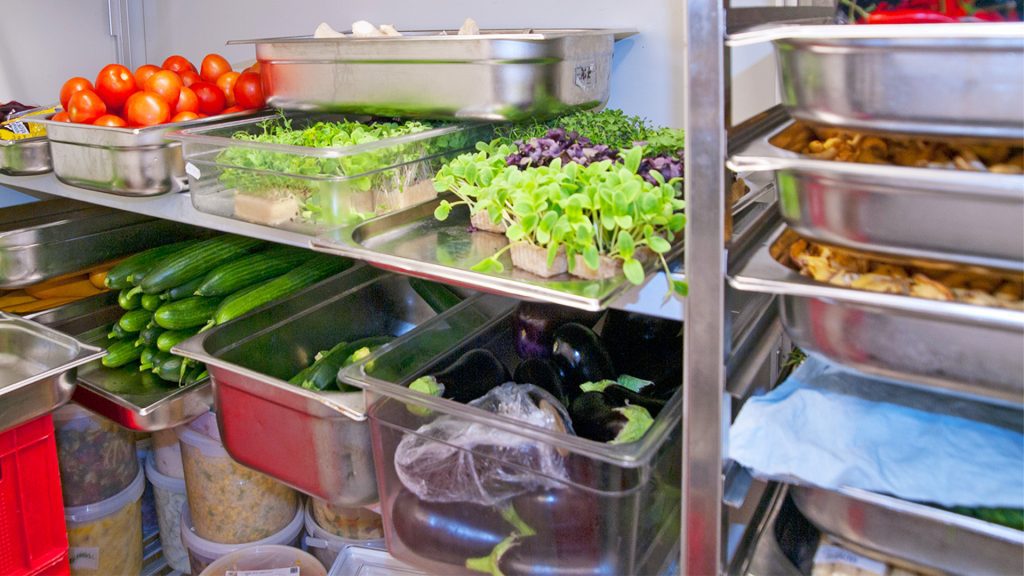

Once you’ve established an organization system for your walk-in cooler, it’s important to regularly monitor its effectiveness and make adjustments as needed. Food storage requirements can change over time, and staying proactive will ensure your cooler remains organized and efficient. Here are some tips for monitoring and adjusting organization strategies:
- Conduct Regular Audits – Schedule periodic audits of your walk-in cooler to assess how well the organization system is working. Look for areas of improvement, such as frequently misplaced items or inefficient retrieval processes.
- Review Inventory Turnover – Analyze your inventory turnover rates and adjust organization strategies accordingly. For instance, if certain items are frequently accessed, consider relocating them to more accessible shelves.
- Solicit Staff Input – Encourage staff to provide feedback on the organization system during team meetings or one-on-one discussions. Their frontline perspectives can shed light on practical challenges and potential solutions.
- Stay Informed about Food Safety Guidelines – Keep up-to-date with industry standards and guidelines related to food safety and storage. If new recommendations arise, be prepared to adjust your cooler organization strategies accordingly.
By remaining vigilant and adaptable, you’ll ensure that your walk-in cooler remains organized and optimized for food safety.
How to Organize Your Walk-In Cooler Like a Pro in H-Town! 🌟


Let’s just say, organizing your walk-in cooler can be the difference between a smooth ride and a bumpy road for your business. Whether you’re slinging tacos at a food truck, whipping up gourmet dishes in a restaurant, or arranging blooms at a floral shop, keeping your cooler in shipshape is like having a trusty pickup truck—it gets the job done right! 🚚✨
Boosting Profits with Smart Organization 💰
Picture this: My buddy Juan runs a bustling little restaurant down in Houston. He was always battling food spoilage and waste—like trying to catch a greased pig at the county fair. After a bit of brainstorming, Juan decided to revamp his walk-in cooler. With some simple organizational hacks, he turned things around faster than you can say “What’s cookin’, good lookin’?”
Here’s what we learned that made a world of difference:
- Keep It Separated: Just like we don’t mix our sweet tea with unsweetened, keep raw meat on the bottom shelf. This prevents any cross-contamination and keeps you in the good graces of the health inspectors. Ain’t nobody got time for that!
- Invest in Good Containers: Y’all, airtight containers are a game-changer. They keep stuff fresh and help avoid that dreaded freezer burn. Juan found that his meat products lasted longer, which meant less waste and more moolah in his pocket.
- Airflow is Key: Ensure there’s at least six inches between items and keep the floor clear. Good airflow is like a breath of fresh air for your cooler, preventing spoilage and helping your fridge run like a well-oiled machine.
- Label Like a Boss: Use labels with expiration dates. It’s a simple trick, but it can save you from a heap of waste. Juan even started using color-coded labels for quick identification—super handy for his staff!
The Numbers Don’t Lie 📊
Let’s crunch some numbers. If Juan’s restaurant spends around $10,000 a month on inventory and he slashes waste by just 10%, that’s a sweet $1,000 saved each month! Over a year, that’s a whopping $12,000. Imagine what you could do with that cash—maybe treat yourself to some brisket tacos or reinvest into your business!
Here’s a quick breakdown:
- Monthly Inventory Cost: $10,000
- Waste Reduction: 10%
- Monthly Savings: $1,000
- Annual Savings: $12,000
Organizing Beyond the Kitchen 🥡
It ain’t just about restaurants! From convenience stores to research facilities, keeping your cooler organized is crucial. Take Linda, for example—she runs a floral shop, and she used the same tips to keep her flowers fresh and vibrant. When she organized her cooler, her blooms stayed lively longer, and her customers kept coming back for more.
Safety First, Always 🌿
At the end of the day, organizing your walk-in cooler helps ensure food safety. It’s not just about avoiding health code violations; it’s about keeping pests at bay and maintaining a healthy environment for your business.
Here are some more pro tips:
- Keep food six inches off the ground—it makes cleaning a breeze and prevents contamination.
- Circulate that air properly—this keeps your food fresh and your fridge running smooth.
- **Never place food on the floor**—trust me, that’s a one-way ticket to trouble.
Final Thoughts:


In summary, organizing your walk-in cooler can lead to serious cost savings and boost your efficiency. So, let’s get to it! We challenge you to take a moment and think about how you can implement these tips in your business.
Remember, a well-organized cooler isn’t just about saving money; it’s also about enhancing food safety and keeping your customers happy. Contact us today for more tips and advice! 🌟
Ready to Cool It? 🥶🌟


Hey friends! If your walk-in cooler seems inefficient, don’t worry—we’re here to help! As grandma said, “A stitch in time saves nine,” so take that first step today! 🧵✨ With some organization, you can keep your food fresh and your business thriving.
Reach out for all your walk-in cooler needs—we have the expertise to keep things cool and clean. 📞 Call us at +1 (281) 818-5959 or visit our [contact page](https://unitycoolingsystems.com/contact-us/) for more info.
Don’t forget to follow us on LinkedIn for updates and tips to maintain your cooler! 🌟 Check out our video library on YouTube to see how an organized cooler can make a difference!
Join us on this journey, and let’s ensure your walk-in cooler is the MVP it deserves to be! 🥇
Additional Resources:


- N. Engler and M. Krarti, “Optimal designs for net zero energy controlled environment agriculture facilities,” Energy and Buildings, 2022. [HTML]
- V. Nubbe, K. Lee, A. Valdez, E. Barbour et al., “Grid-Interactive efficient building technology cost, performance, and lifetime characteristics,” 2021. escholarship.org
- AM Aljaroudi, A Bhattacharya, A Strauch, “Effect of cooling on static postural balance while wearing firefighter’s protective clothing in a hot environment,” Journal of Occupational Safety and Ergonomics, vol. 2023, Taylor & Francis, 2023. nih.gov
- J. Henderson, “… into the Resilience and Durability of High R-Value Exterior Insulated Wood Framed Walls in Cold Climates Assessed Using In-Situ Measurement and Calibrated …,” 2021. torontomu.ca
- M. Garrabrant and C. Keinath, “Pre-Commercial Scale-Up of a Gas-Fired Absorption Heat Pump,” 2020. osti.gov

